Ozempic is one of the most talked about prescription medications in recent history. Its reputation extends far beyond its original purpose of managing type 2 diabetes. More people now use Ozempic as an anti-obesity medication. According to research, higher doses of Ozempic may induce weight loss, especially when combined with healthy lifestyle interventions.
Despite this, many people who lose weight tend to gain most of it back when they discontinue the drug. That's because the effects reverse quickly. Stopping Ozempic causes:
People who want to shed weight might need to keep using Ozempic in high dosages. With the imminent Ozempic withdrawal, there are concerns about whether this and other weight loss medications cause addiction. In this article, we will look at how these drugs work and whether or not they are habit-forming.
Ozempic is a Food and Drug Administration (FDA) approved medication for the treatment of type 2 diabetes. It belongs to a class of drugs called GLP-1 receptor agonists. When you inject Ozempic, it activates the GLP-1 receptors in your body. This prompts your pancreas to release insulin when your blood sugar is high, which helps lower your blood sugar levels. It also slows down the speed at which your stomach empties, which helps to reduce your appetite and can lead to weight loss.
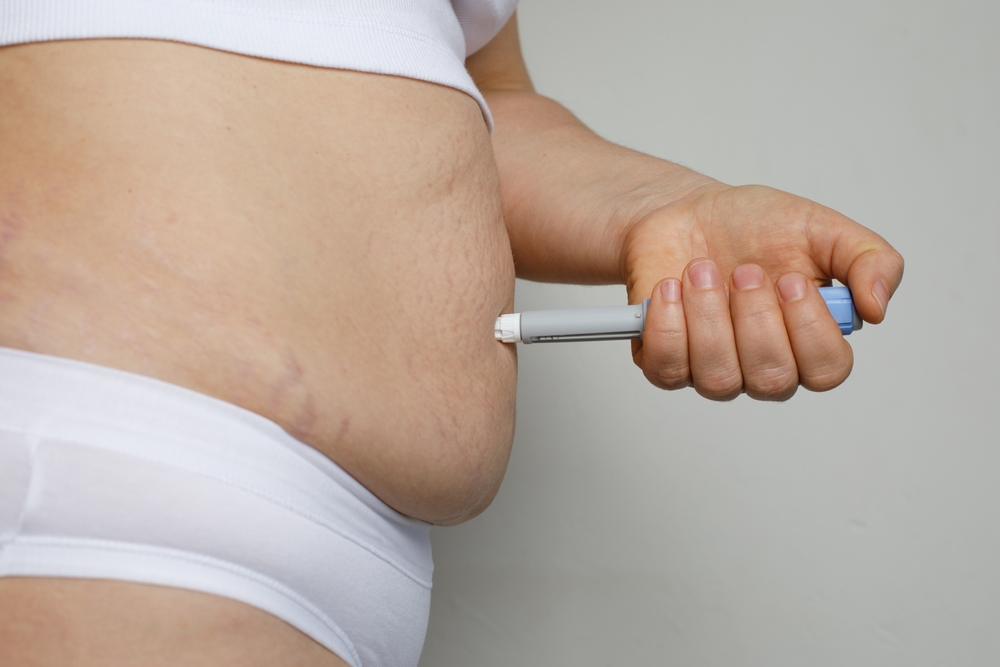
Note that Ozempic is usually administered as part of a holistic plan that includes diet, exercise, and possibly other diabetes medications.
The FDA first approved Ozempic for treating diabetes in 2017 and semiglutide for obesity in 2021 under the brand name Wegovy. Since then, there has been a huge demand for Wegovy as more people are trying to attain a healthy weight. Today, about 42% of US adults are obese, and about 65% say willpower alone is not enough to lose and maintain a healthy weight. When you put these two factors together, you realize why weight loss drugs like Ozempic and Wegovy are very popular.
Clinical data show that Wegovy is the most common weight loss medication. After just one year, people taking the drug lost 15% of their weight compared to 2.5% weight loss among those who take an inactive pill. But besides Wegovy, there are other weight loss pills that actually work. These include Zepbound, Qsymia, Saxenda, and Contrave. In 2021, about 2 million people in the US were taking semiglutide diet pills to manage weight.
Weight loss drugs like Ozempic and Wegovy are not typically considered habit-forming in the same way that drugs of abuse, such as opioids or stimulants, are. Therefore, they're not known to cause physical addiction in the traditional sense.
However, some people may develop a psychological dependence on Ozempic, particularly if they have experienced significant weight loss while using the medication. They may feel anxious or reluctant to discontinue the drug for fear of weight regain. However, this dependence is not the same as addiction and can be managed with appropriate medical guidance and support.
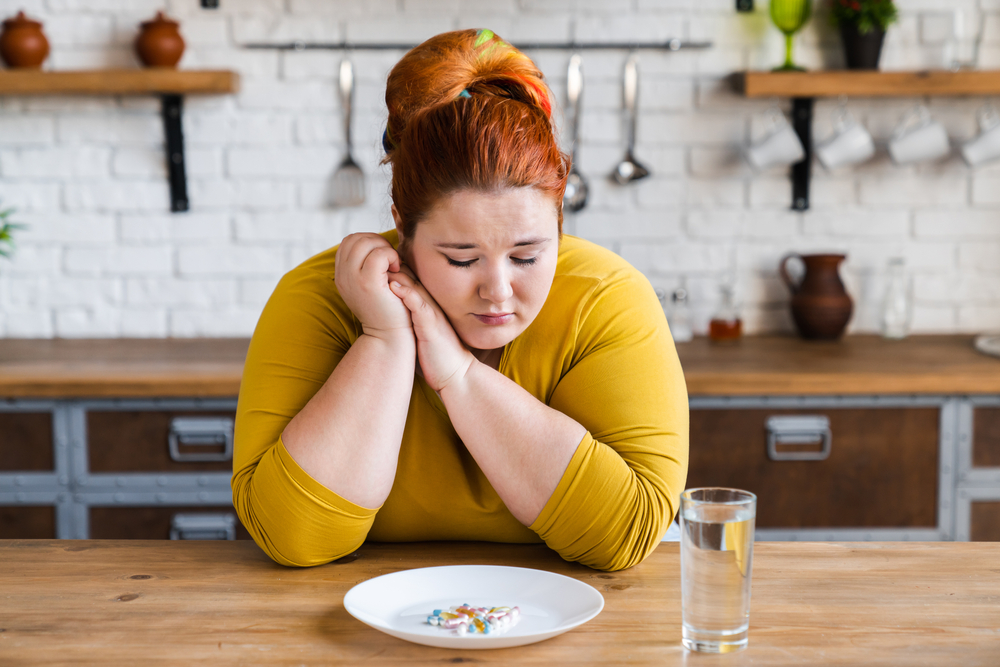
It's advisable to use Ozempic under the care of a health care provider. They will offer guidance on lifestyle modifications, monitor for potential side effects, and provide strategies for managing any concerns related to dependence or discontinuation of the medication.
Ozempic (semaglutide) is primarily indicated for the treatment of type 2 diabetes mellitus in adults. However, it has also been shown to have cardiovascular benefits and can help lower high blood pressure and dyslipidemia. You are not to use Ozempic if you or a close family member has a history of medullary thyroid carcinoma (MTC) or multiple endocrine neoplasia syndrome type 2 (MEN 2). These conditions are associated with an increased risk of thyroid cancer, and Ozempic may exacerbate this risk.
The latest weight loss medications don't cause addiction. In fact, reports show that drugs like Wegovy and Ozempic can actually dampen the urge to drink, smoke, and even bite their nails. Clinical trials and research are underway to determine the exact mechanism through which these drugs exert their anti-addictive effects. But several theories have been suggested.
One theory says that the drugs regulate dopamine release and, therefore, reduce the pleasurable effects of substances and motivation to use them. Besides, GLP-1 receptors are also found in the brain region linked to motivation and reward. These brain receptors play a crucial role in addiction. Ozempic can regulate these receptors and influence the reward system, thereby minimizing the reinforcing effects of alcohol and drugs.
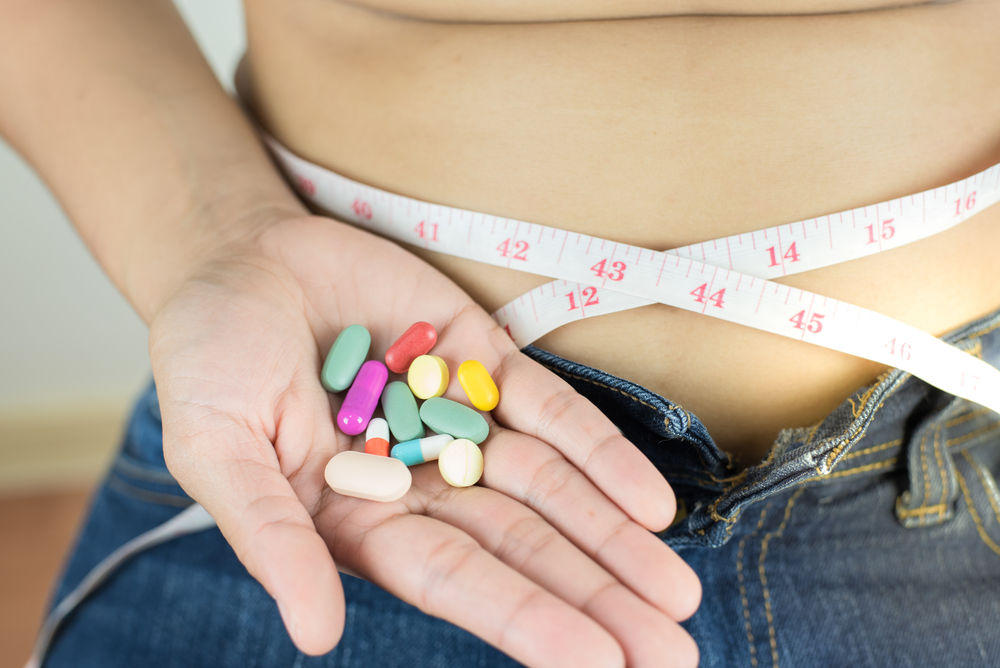
In the past, weight loss drugs were not as safe as they are today. In the 1930s, many weight loss medications were formulated with potent and hazardous substances, notably amphetamines and other stimulants.
These drugs were intended to help people want to diet and gave pleasure not found on a plate. But they came with significant risks, including addiction, tolerance, and adverse cardiovascular effects. Amphetamines used for weight loss were largely discontinued in the 1970s with the "war on drugs.”
Other drugs like Fen-phen made an entry in the 1980s and 90s but were discontinued after lung and heart valve disease cases arose. Leptin also had a brief moment in the mid-1990s and ephedra in the 1990s and 2000s but was later stopped. Ephedra, a chemical found in drugs like Dexatrim ("mommy speed") was banned after it was linked to heart issues like seizures, heart attacks, strokes, and deaths.
Today, we have the likes of Ozempic and Wegovy, which are mostly safe. And while these have been shown to have incredible health benefits, they are not miracle drugs. Again, many people are using drugs like Ozempic in ways that are not intended for. Some are getting it online, while others are finding physicians who can prescribe them "off-label."
If this trend continues, people may associate Ozempic with "vanity" and not as an essential drug for people with diabetes.
Addiction is a complex and chronic condition, and there is no one-size-fits-all approach to treatment. What works for one person may not work for the other. That's why treatment centers use different evidence-based practices to address the diverse needs of those struggling with substance use disorders.
Evidence-based addiction treatment has been shown to be effective, cost-effective, and beneficial in helping those struggling with addiction overcome their drug and alcohol abuse. Research also suggests that it can help reduce the negative impacts of addiction on a person's brain and behavior.
This article will explore the effectiveness and advantages of evidence-based addiction treatment methods. We'll look at the scientific rationale behind these approaches and shed light on why they stand out as the gold standard for achieving lasting recovery.
Evidence-Based Addiction Treatments are therapeutic interventions and strategies that have been rigorously tested and proven effective through scientific research and clinical studies. These methods are not based on anecdotal evidence but are grounded in empirical data and outcomes. In other words, they have a strong scientific foundation; demonstrating consistent positive results in helping individuals overcome addiction.

There are many different types of evidence-based treatment methods for addiction treatment. According to the NIDA, each approach is meant to address a specific aspect of drug addiction and its effects on the individual, family, and society. Some of these approaches are designed to enhance or supplement existing treatment modalities, while others are fairly comprehensive by themselves.
For example, studies have found superiority in combination therapies like contingency management to improve compliance with naltrexone for alcohol use disorder. However, since no two patients are alike, the treatment choice should be based on the needs of each patient, taking into account the available services within a treatment program and the client's ability to afford those services.
Using evidence-based practices for addiction is important as it ensures treatments are based on solid scientific evidence and not on personal opinions or guesswork. Relying on peer-reviewed scientific research means that healthcare specialists can be confident in the effectiveness of their approaches, knowing they're rooted in proven results.
Additionally, the approach prevents the adoption of methods that don't have proof of working or might even be harmful. Sometimes, treatments become popular even without enough evidence to show they actually work. Besides, an evidence-based approach promotes continuous evaluation and enhancement.
When treatment providers consistently check how well the treatment is working and gather information, they can find ways to make it better. This dedication to evaluation and improvement ensures that patients get the best care possible because treatment providers are always updating their methods based on the latest research and best practices.
Let's explore some common evidence-based approaches:
MAT integrates FDA-approved medications with behavioral therapies and counseling to provide a comprehensive and effective treatment strategy. The medication choice depends on the specific substance being abused. Examples of Medications:
For Opioid Use Disorder:
For Alcohol Use Disorder:
MAT medications help mitigate cravings and withdrawal symptoms associated with substance use. They've also been shown to stabilize patients and minimize relapse risk. This allows one to focus on their recovery without the distressing physical and psychological effects of withdrawal.
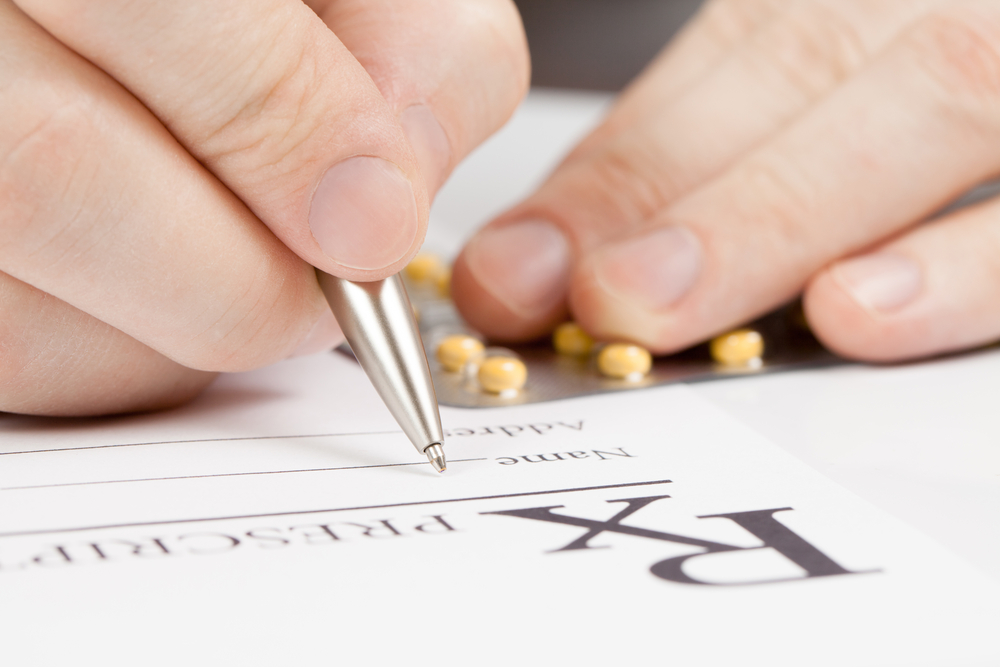
Behavioral therapies are a type of counseling that helps people change their actions and reactions. It's like learning new habits for a better life. In these therapies, individuals work with a trained counselor to understand how their thoughts and behaviors are connected. The goal is to identify and change patterns that might be causing problems, like addiction or stress.
Learning new, positive ways to respond to challenges allows those in treatment to improve their mental health and overall well-being. It's a bit like rewiring the brain to make healthier choices and feel better.
Some common examples of evidence-based behavioral therapies include
Cognitive behavioral therapy targets the relationship between thoughts, feelings, and behaviors. It helps one identify and challenge negative thought patterns, replacing them with healthier, more positive ones. A literature review of several reputable electronic databases found that evidence-based psychosocial interventions like CBT are effective in reducing addiction and supporting improvement in other aspects of life. CBT also offers long-term benefits as it arms one with practical skills to cope with stress, manage cravings, and prevent relapse.
DBT was originally developed for treating borderline personality disorder but is now used in addiction treatment. It combines cognitive-behavioral techniques with elements of acceptance and mindfulness. DBT focuses on enhancing emotional regulation, interpersonal effectiveness, distress tolerance, and acceptance of oneself.
Motivational Interviewing is a patient-centered therapeutic approach designed to enhance motivation for change. It involves expressing empathy, developing discrepancy between current behavior and desired goals, rolling with resistance, and supporting self-efficacy. The goal is to help individuals explore and resolve ambivalence about change.
CM uses tangible rewards, like vouchers or prizes, to encourage individuals to comply with treatment or stay drug-free. Motivational Incentives boost motivation by offering rewards for achieving treatment goals, making the journey to recovery feel more rewarding. The intervention has been studied for people with cocaine addiction, and positive outcomes applying modifications of the approach have also been noted for combined cocaine and opiate addiction, marijuana addiction, and alcohol addiction.
Exposure therapy helps individuals confront and overcome their fears or anxieties by gradually exposing them to the feared object or situation. It’s a well-established treatment for post-traumatic stress disorder, which tends to co-occur with SUDs. This exposure is systematic and controlled, allowing the person to confront their fears in a safe and supportive environment. The process helps individuals learn that the feared outcomes are less likely to occur than anticipated, leading to a reduction in anxiety over time.
Motivational interviewing aims to help individuals explore and resolve ambivalence toward behavior change. It focuses on empowering the individual to find their motivation and commitment to change rather than imposing external pressure. Therapists often employ open-ended questions, reflective listening, and affirmations to foster a non-confrontational and collaborative atmosphere.

12-step Facilitation Therapy is a structured approach rooted in the principles of programs like Alcoholics Anonymous (AA) or Narcotics Anonymous (NA). It guides individuals through the 12 steps to recovery, promoting engagement in self-help groups. According to surveys, these 12-step programs encourage more participation.
The mechanisms driving behavior change in community support groups are not fully understood. However, recent in-depth evaluations indicate that these groups, similar to formal treatment approaches, facilitate change through shared therapeutic processes. The long-term nature of community support groups aligns with the views of SUDs as chronic conditions requiring ongoing care, potentially extending throughout one's life.
MDFT is a comprehensive approach addressing various aspects of an individual's life. It recognizes that addiction often involves family dynamics, and MDFT involves the entire family in the therapeutic process. Therapists work collaboratively with family members to improve communication, set boundaries, and create a supportive environment for recovery.
Group and individual counseling help address the psychological aspects of addiction and support individuals on their path to recovery. In individual counseling, clients work one-on-one with a therapist to explore personal challenges, set goals, and develop coping strategies. Group therapy brings individuals together, providing a supportive community where shared experiences foster understanding and empathy. Both formats offer unique benefits; individual counseling allows for personalized attention, while group counseling provides a sense of belonging and shared accountability.
Evidence-based addiction treatment provides many benefits to those struggling with substance use disorders. Using interventions based on scientific research and personalizing plans to individual's needs improves outcomes, minimizes the risk of relapse, and empowers patients on their path to recovery.
Decades of studies have confirmed that sleep is necessary for healthy functioning and even survival. It helps us think clearly, be alert, and sustain attention. It also helps us consolidate memories, regulate emotions, and improve overall health. However, substances like drugs and alcohol have disruptive effects on the natural sleep cycle. They make it hard to fall and stay asleep, exacerbate existing sleep problems, and lead to new ones.
Lack of sleep can lead to a range of physical and psychological issues, including mood changes, impulse behavior, suicidal thoughts, trouble thinking or concentrating, anxiety, depression, etc. But the relationship between sleep and recovery goes both ways. The way drug use can lead to sleep issues is the same way that sleep issues cause substance abuse. This article highlights this relationship and how consistent sleep patterns can help in the addiction recovery process.
Addiction is a chronic disorder characterized by compulsive drug seeking and use despite the negative consequences. It’s considered a brain disorder because it rewires the brain circuits responsible for self-control, stress, and reward. These changes can lead to a range of issues, including short and long-term sleep problems like:
Conversely, sleep deprivation and disorders can lead to substance abuse as people seek drugs or alcohol to self-medicate. Lack of sleep disrupts the brain's reward system, making it more susceptible to addiction. This vicious cycle further complicates recovery efforts.
Different substances can have varying effects on sleep, and the impact largely depends on the type of substance, the dose, and individual factors. Here’s a quick look at the effects of drugs on sleep:
Stimulants increase alertness, energy, and wakefulness and make it hard to fall asleep or stay asleep. If you use stimulants, you might experience episodes of insomnia, where you find it almost impossible to get a good night's rest. Additionally, the crash that follows stimulant use can lead to extreme fatigue and excessive sleeping, further destabilizing your sleep cycle.
A study of college students found that those with a history of nonmedical psychostimulant use had more sleep disturbance or worse subjective or overall sleep quality than those who hadn’t used such substances.
Depressants and sedatives have a sedative effect that makes you feel drowsy and relaxed. However, while they may help you fall asleep faster, they disrupt the natural sleep cycle. As your body processes these substances, they interfere with the deeper stages of sleep, resulting in fragmented rest.
Sedatives like alcohol have also been shown to increase the risk of snoring, sleep apnea, and snoring. People in recovery from alcohol, marijuana, and other sedatives may continue to experience sleep problems for weeks or even months after withdrawal.
Hallucinogens typically don't have a direct sedative or stimulant effect on sleep patterns. However, the hallucinatory experiences associated with these substances can lead to sleep disturbances. Vivid and sometimes unsettling dreams or nightmares are common after using hallucinogens. These dreams can disrupt your sleep, causing you to wake up frequently during the night and leading to a less restorative sleep overall.
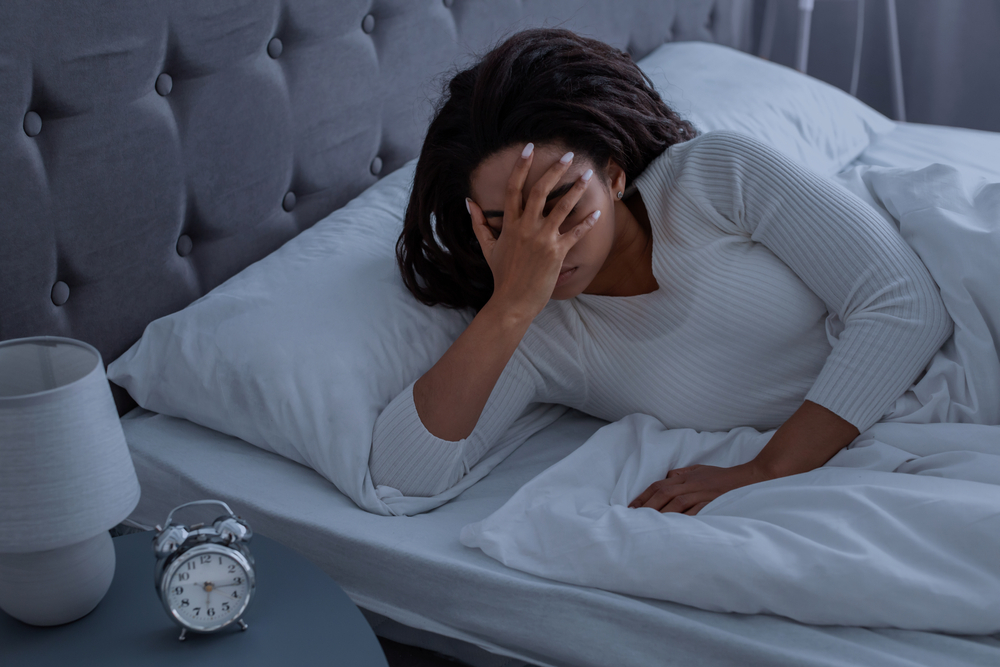
Lack of sleep can hurt the physical, emotional, and mental well-being of those in recovery. It can also get in the way of substance abuse treatment. Sadly, studies reveal that persistent sleep disorders after withdrawal are linked to relapse. Let’s look at how sleep deprivation leads to substance abuse:
When you're sleep-deprived, your stress levels rise, and your ability to cope with anxiety diminishes. You may start seeking substances like alcohol or drugs as a way to self-medicate and temporarily relieve these feelings. Over time, this can lead to a dangerous pattern of substance abuse.
Sleep deprivation impairs your cognitive function and decision-making abilities. You might make impulsive choices, including experimenting with or using substances you wouldn't otherwise consider. This impaired judgment can lead to the initiation of substance abuse.
To combat this, you may turn to stimulants like caffeine or even more potent drugs to stay awake and alert. This quest for energy can quickly escalate into substance abuse, especially with highly addictive substances like amphetamines.
Sleep deprivation disrupts the brain's reward system. It can make you more susceptible to seeking immediate rewards, such as the pleasurable effects of substances. This craving for rewards can intensify and become a driving force behind substance abuse.

Sleep plays an important part in healing from substance abuse and can greatly contribute to a person’s recovery in the following ways:
Your body undergoes a natural detoxification process during sleep. It's during these crucial hours that the brain activates the glymphatic system, a waste clearance system that removes toxins and metabolic waste products. Adequate and uninterrupted sleep enables this process to work optimally, aiding in the elimination of substances from your system.
The detoxification process is often accompanied by withdrawal symptoms, which can be physically and emotionally distressing. Quality sleep helps mitigate some of these symptoms, such as physical discomfort, restlessness, and anxiety, making the detoxification process more manageable.
Consistent sleep patterns play a pivotal role in regulating neurotransmitters like serotonin and dopamine, which are closely tied to mood. Substance abuse disrupts these neurotransmitter systems, leading to mood swings and instability. Adequate sleep aids in mood stabilization and makes you feel more emotionally stable.
Mood swings are closely linked to cravings for substances. When you're well-rested, you're better equipped to manage these cravings and make healthier choices. This mood stability can be a powerful ally in your recovery journey.
Substance abuse often impairs cognitive functions like memory and learning. Sleep is essential for memory consolidation and the processing of information. With consistent sleep patterns, your brain has the opportunity to repair and enhance these cognitive functions, aiding in your overall recovery.
Sleep deprivation impairs decision-making abilities and can lead to impulsive choices, including returning to substance use. When you prioritize sleep, you can think more clearly and make more rational decisions, reducing the likelihood of relapse.
Recovery often requires significant lifestyle changes and therapeutic work. Consistent sleep helps improve attention and focus, enabling you to engage more effectively in therapy and adopt healthier habits.
Here are some bedtime routines to help you achieve a good night's sleep as a crucial part of your holistic healing from substance abuse:
If you continue to struggle with sleep despite your efforts, don't hesitate to seek guidance from a healthcare professional or therapist. They can provide tailored strategies and, if necessary, medication options to improve your sleep.
Sleep is crucial for individuals recovering from substance abuse because it plays a significant role in physical and mental health, as well as in the recovery process itself. Adequate sleep supports overall well-being by promoting physical healing, cognitive function, and emotional regulation. During sleep, the body undergoes essential processes such as tissue repair, immune system maintenance, and the consolidation of memories, all of which are vital for recovery from substance abuse and overall health. Moreover, sleep plays a crucial role in mood regulation and stress management. Poor sleep quality or insufficient sleep can exacerbate symptoms of anxiety, depression, and irritability, which are common challenges faced by individuals in recovery. Sleep deprivation can also increase cravings for drugs or alcohol and impair judgment and decision-making abilities, making it more difficult to resist relapse triggers and maintain sobriety. Therefore, prioritizing sleep as part of a comprehensive recovery plan can help individuals in recovery manage stress, reduce cravings, improve mood, and enhance overall well-being, contributing to long-term sobriety and recovery success.
Lack of sleep can significantly impact the recovery process from substance abuse by exacerbating existing challenges and hindering progress toward sobriety. Sleep deprivation can disrupt cognitive function, impairing memory, concentration, and decision-making abilities, which are essential for navigating the complexities of recovery. Moreover, inadequate sleep can contribute to mood disturbances, including increased irritability, anxiety, and depression, making it more challenging to manage stress and regulate emotions effectively.
These mood changes can increase vulnerability to relapse triggers and undermine efforts tomaintain sobriety.
Furthermore, sleep deprivation can intensify cravings for drugs or alcohol and weaken resolve to resist substance use. The brain's reward system becomes more sensitive to rewarding stimuli, including substances, when sleep-deprived, making it harder to resist impulses and cravings. Additionally, chronic sleep deprivation can compromise physical health, weaken the immune system, and exacerbate existing health conditions, further complicating the recovery journey. Therefore, prioritizing sleep hygiene and addressing sleep disturbances as part of a comprehensive recovery plan is crucial for optimizing outcomes and supporting long-term sobriety.
Yes, there are medications and therapies available to help improve sleep quality for individuals in recovery from substance abuse. Non-addictive medications such as certain antidepressants or antihistamines may be prescribed to address underlying sleep disorders such as insomnia or sleep disturbances resulting from substance withdrawal. These medications can help regulate sleep-wake cycles, promote relaxation, and improve overall sleep quality without the risk of addiction or dependency. Additionally, various behavioral therapies and interventions can be effective in improving sleep hygiene and addressing sleep-related difficulties. Cognitive-behavioral therapy for insomnia (CBT-I) is a structured, evidence-based approach that helps individuals identify and modify negative thoughts and behaviors that contribute to sleep disturbances. CBT-I techniques may include sleep restriction, stimulus control, relaxation training, and cognitive restructuring, among others, to promote healthier sleep patterns and improve sleep quality. Furthermore, incorporating mindfulness-based practices, relaxation exercises, and stress reduction techniques into daily routines can help individuals manage stress, reduce anxiety, and promote relaxation, facilitating better sleep. Overall, a comprehensive approach that combines medication management, behavioral therapies, and lifestyle modifications tailored to the individual's needs can help individuals in recovery improve sleep quality and support their overall well-being during the recovery process.
Individuals in recovery can adopt various lifestyle changes and habits to promote better sleep quality during the recovery process. Establishing a consistent sleep schedule by going to bed and waking up at the same time each day helps regulate the body's internal clock and promotes better sleep quality. Creating a relaxing bedtime routine, such as taking a warm bath or practicing deep breathing exercises, can signal to the body that it's time to wind down and prepare for sleep. Additionally, ensuring that the sleep environment is comfortable and conducive to restful sleep by keeping the bedroom cool, dark, and quiet and investing in a comfortable mattress and pillows can further support quality sleep.
Limiting stimulants such as caffeine and nicotine in the hours leading up to bedtime, as well as minimizing exposure to electronic devices that emit blue light, helps prevent sleep disturbances. Engaging in regular exercise during the day promotes better sleep quality by reducing stress and promoting relaxation, though vigorous exercise should be avoided close to bedtime. Practicing stress reduction techniques like mindfulness meditation or yoga can also help manage stress and promote relaxation before bedtime. Lastly, limiting alcohol and heavy meals before bed can prevent disruptions to sleep patterns and discomfort that may interfere with falling asleep and staying asleep. By incorporating these lifestyle changes and habits, individuals in recovery can support better sleep quality, enhance their overall well-being, and strengthen their recovery journey.
Research shows that about 40-60% of people relapse within 30 days of completing a rehab program, and up to 85% relapse within the first year. These statistics highlight the challenging nature of addiction recovery. But the good news is that relapse is a normal part of the recovery process, and there are several effective things you can do to lower the risk of relapse and promote long-term recovery.
The recovery from addiction is not a one-time event but an ongoing process. It's essential to understand that there isn't a finish line where you can declare yourself "cured." Instead, it's more like embarking on a lifelong journey – one that requires continuous effort, commitment, and positive reinforcement.
Just as a journey involves taking one step at a time, recovery relies on the accumulation of everyday habits. These small, consistent actions build up over time to create a substantial and lasting change in your life. Daily habits provide a sense of purpose and direction as you navigate the challenges and uncertainties that come with recovery. They also offer structure and routine that help you regain a sense of control, which can be particularly comforting during the turbulent early stages of recovery.
So, let's explore these daily habits in more detail and understand how they can empower you to stay on track and build a healthier, more fulfilling life in recovery.
One of the first things to do is to define your goals with utmost clarity. Vague or ambiguous objectives can make it difficult to measure progress or stay motivated. Consider using the SMART criteria (Specific, Measurable, Achievable, Relevant, and Time-bound) to structure your goals.
Applying the SMART criteria to your recovery goals can help you create a roadmap for your journey, making it easier to stay focused, track your progress, and celebrate your achievements along the way. It's important to break larger goals into smaller, more manageable steps to maintain motivation and a sense of accomplishment throughout your recovery process.

Social challenges like peer pressure, environments, situations, etc., can be significant obstacles in the path to recovery. You need relapse prevention strategies in place to help you avoid or deal with such triggers when they arise. Here are some quick strategies for avoidance:
There is a strong connection between nutrition and mental health. A diet rich in fruits, vegetables, lean proteins, and whole grains can positively impact your mood and cognitive function, supporting emotional stability during recovery.
Proper nutrition also provides your body with the essential nutrients it needs to repair and heal. It can help alleviate physical symptoms associated with recovery, such as withdrawal symptoms or imbalances in neurotransmitters. Not only that, a healthy diet stabilizes your energy levels, reducing mood swings and irritability that may trigger cravings or relapse.
Here are some quick tips when planning your meals for a healthy lifestyle:
Experts think that physical activity can serve as a healthy stand-in for drugs and alcohol. The reason is exercise, and addictive substances work on the same parts of the brain. Adding physical activity to your routine helps release endorphins, which improve mood and reduce stress. Exercise as part of your daily discipline will also help you feel more energized and focused throughout the day.
Studies show that exercise might:
All these aspects are essential for recovery success. Dedicate time for your workouts and commit to it. The best part about exercising is you don’t have to stick to the same old boring routine. Try different activities, including yoga, swimming, dancing, sailing, cycling, climbing, hiking, martial arts, sports, etc., to discover the ones you love.

Taking a few minutes in every day to practice mindfulness and meditation can help you stay calm and focused. It's like giving your mind a fresh start for the day. You can do this by simply sitting quietly, focusing on your breath, and clearing your thoughts.
Mindfulness has been shown to increase self-awareness and reduce impulsive behaviors, all of which are great in your road to recovery. It also provides a powerful tool for reshaping the brain's neural connections and countering the effects of addiction.
Explore new hobbies and interests to stay engaged and focused on your recovery. Whether it's painting, hiking, playing an instrument, or any other activity, finding something you're passionate about can provide a sense of purpose and fulfillment.
A journal can help you reflect on your thoughts and emotions, track your progress, and identify any patterns or triggers that may affect your recovery. It's a valuable tool for self-awareness and self-improvement.
A consistent sleep schedule is crucial for overall well-being and mental health. Ensure you get enough rest by setting a bedtime and wake-up time that allows for sufficient sleep. Quality sleep can have a significant impact on your physical and emotional recovery.
Waking up at the same time each morning helps regulate your body's internal clock, improving your sleep quality and overall health. It also provides structure to your day and can enhance your productivity and mood.
Taking care of your physical well-being is essential for mental and emotional recovery. Establish a daily hygiene routine, as this will improve your physical health and boost your self-esteem and sense of well-being.
Remember that recovery is a journey, and these habits can support your progress along the way. It's important to tailor these habits to your specific needs and goals and seek professional guidance and support if necessary.
Substance abuse changes how your brain, body, and central nervous system work. When you decide to stop using substances, it can trigger various withdrawal symptoms, and anxiety is a common one.
Anxiety is a natural stress response and often manifests as feelings of unease, fear, or worry. The intensity of anxiety can vary depending on factors like the type of substance used, the duration and severity of use, and individual differences in how the body and brain respond to withdrawal.

Withdrawal occurs when someone stops using a substance they have become dependent on, and during this period, anxiety symptoms can intensify. This happens due to chemical imbalances in the brain and the body adjusting to functioning without the substance.
When you become dependent on a substance, your brain and body adapt to the presence of the substance, leading to changes in neurotransmitter levels and neural pathways. When the substance is suddenly removed, the brain and body need time to readjust to the absence of the substance. This can cause fluctuations in neurotransmitter levels, particularly those related to mood regulation, leading to increased anxiety.
Withdrawal-related anxiety disorder can manifest in both physical and psychological symptoms.
Physical symptoms
Psychological symptoms
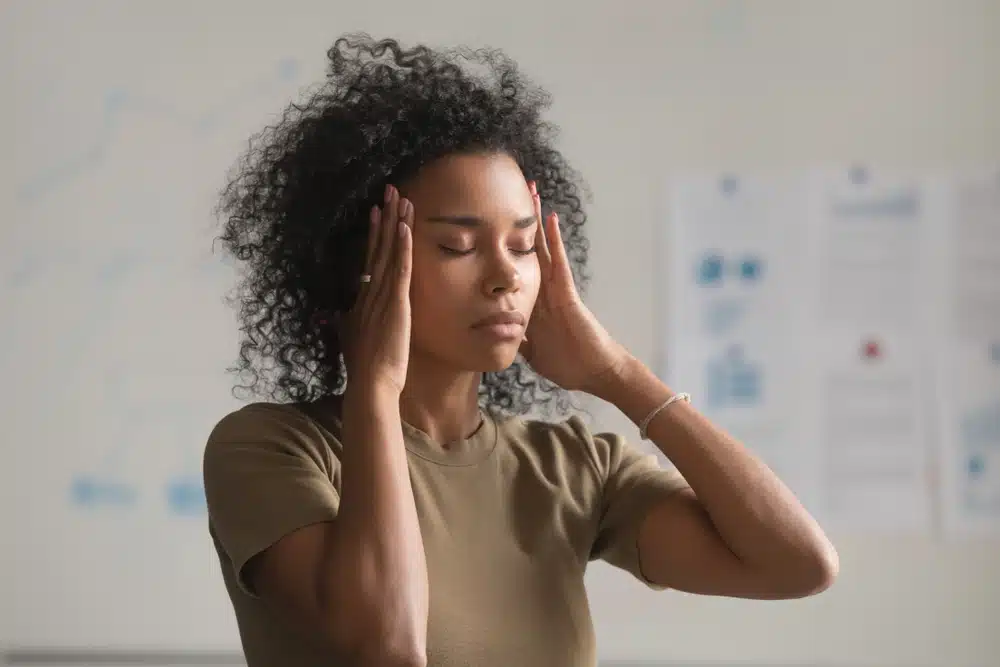
Coping with withdrawal anxiety is crucial for a smoother recovery. Here are some strategies to help manage anxiety during withdrawal:
Be aware of what triggers your anxiety and learn effective coping strategies so you can take proactive steps to manage anxiety during withdrawal and promote a smoother recovery.
Once you have identified your triggers, explore these coping strategies to determine what works best for you.
Relaxation exercises are highly effective in treating anxiety. Studies show that multiple forms of relaxation training can help individuals reduce anxiety and improve overall well-being. Try:
It's tough to navigate recovery alone. You need all the support you can get. Take advantage of the following:
Rest is an essential aspect of managing anxiety during withdrawal. Anxiety symptoms can worsen when your body and mind are tired – and the reverse is also true. Here are a few things to try out:
If you are experiencing severe anxiety or other distressing symptoms during withdrawal, it's best to seek professional help from a healthcare provider or addiction specialist. They can provide appropriate support, guidance, and treatment options to manage anxiety symptoms effectively. In most cases, this will include:
Facing anxiety during withdrawal can be challenging. Know you're not weak – it is often challenging for most people. But you will not regret your decision once the withdrawal is over. You'll enjoy a happier, healthier, and more productive life.
A growing body of evidence suggests a strong link between club drug use and the development of substance use disorder. While not everyone who uses party drugs will develop an addiction, these substances pose unique risks that can increase the likelihood of developing SUD. By understanding the potential risks and long-term consequences, you can make informed decisions about their substance use and prioritize their well-being.
This article will explore the connection between party drugs and substance use disorder. We'll also look at how they affect the brain, behavior, and overall health.
Party drugs, also called raves or designer drugs, are recreational drugs often used in social settings like parties, clubs, music festivals, and other social gatherings. People, especially young adults, use these types of drugs for a range of reasons, including:
Most people favor party drugs because they're perceived to enhance social interaction by heightening euphoria, energy, and empathy. But what most people don't know is the risk they expose themselves to when they use party drugs.
For one, these drugs are made synthetically in labs. So, they can have unexpected side effects during use because of contamination or substitution during formulation. Besides, drug dealers and manufacturers often cut the drugs with other substances to increase potency or profit margins.
This can put users at risk of overdose or even death, especially when their bodies aren't used to the drug. In some cases, the drugs are laced with a date rape drug putting individuals at risk of sexual assault or other forms of harm.
Above all, club drugs for recreational use can lead to drug addiction. We'll discuss more about this in this article, but first, let's look at the types of club drugs.
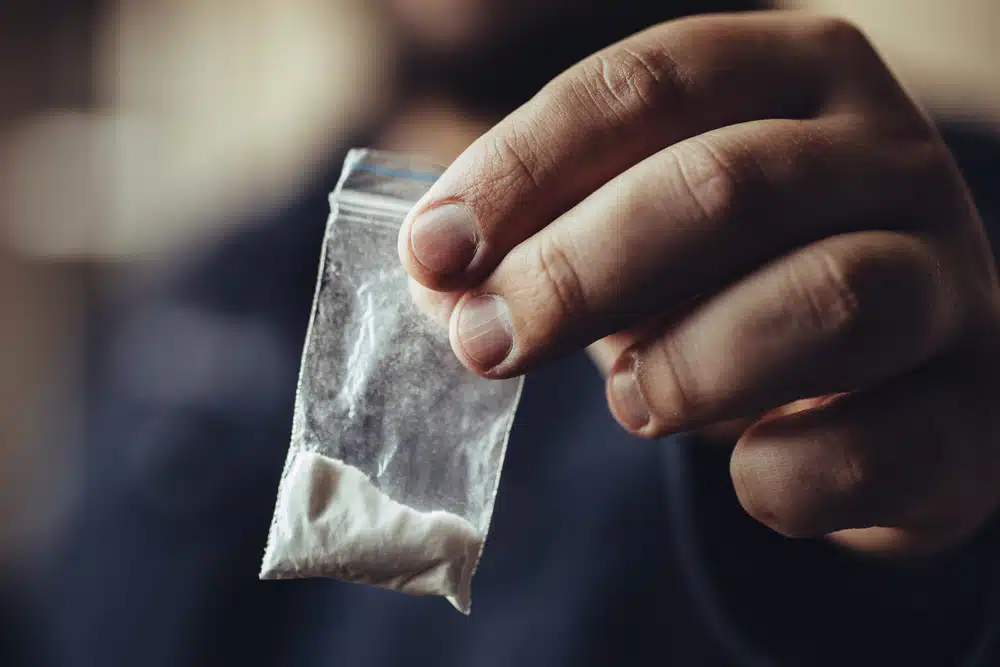
During drug parties, people can use legal and illegal drugs in various forms, each with its effects on the mind and body. Here are some common party drugs:
Stimulants increase alertness, energy levels, and activity in the brain. They produce feelings of euphoria, heightened sociability, and increased focus. However, they can also increase heart rate, elevated blood pressure, and potential overstimulation. Examples of stimulant party drugs include:
Hallucinogens induce profound alterations in perception, mood, and cognition. They can cause sensory distortions, hallucinations, and an altered sense of self and reality. Hallucinogens are known for their potent mind-altering effects and include:
Depressants slow down brain activity, leading to relaxation, sedation, and reduced inhibitions. They can produce feelings of calmness and tranquility but also carry risks of respiratory depression and impaired coordination. Examples of depressant party drugs include:

Party drugs, often used recreationally in social settings, carry a significant risk of addiction and the development of substance use disorder. While party drugs may initially be sought for their pleasurable effects and social enhancement, continued use can lead to a cycle of dependence and compulsive drug-seeking behavior.
To understand the connection between party drugs and substance abuse, let's examine how it affects the brain.
Party drugs, such as MDMA, cocaine, or methamphetamine, target the brain's reward system, flooding it with neurotransmitters like dopamine and serotonin. These chemicals are responsible for feelings of pleasure and happiness. The brain quickly adapts to these surges by reducing its natural production of these neurotransmitters or downregulating their receptors. As a result, a person may experience a "crash" or a "come down" after the drug's effects wear off, leading to intense cravings for more drugs to regain those pleasurable sensations.
With repeated use, the brain can build a tolerance to the effects of party drugs. This means that one needs larger doses over time to achieve the same euphoria they initially experienced. The cycle of increasing drug consumption to maintain the desired effects further reinforces drug dependence.
Continued use of party drugs can lead to cravings—strong desires or urges to use the drug again. These cravings can persist even during periods of abstinence and can be triggered by environmental cues associated with drug use. Additionally, party drugs can cause withdrawal symptoms when drug use is abruptly stopped or reduced, further fueling the cycle of addiction.
The combination of neurochemical changes, tolerance, and psychological cravings can lead to compulsive drug-seeking behavior. Now the person perceives the drug as necessary and needs it to function or cope with daily life.
Substance abuse is a risk factor for mental health issues, and party drugs are no different. According to studies, mental health, and substance use disorders often co-occur, with one leading to the other.
As such, using party drugs can exacerbate symptoms of pre-existing mental health conditions or contribute to developing new disorders. When this happens, people may turn to party drugs to cope or self-medicate. Here's a quick look at the effect of club drugs on mental health:
Stimulant drugs like cocaine, amphetamines, and MDMA can cause heightened arousal, restlessness, and intense anxiety. Hallucinogens like LSD and psilocybin can also lead to anxiety, especially if the individual experiences a bad trip or overwhelming hallucinations.
Drugs like MDMA and methamphetamine can cause a temporary increase in mood and euphoria during use. However, the subsequent decrease in neurotransmitter levels (e.g., serotonin) can lead to a "crash" or feelings of depression, irritability, and emotional instability afterward. Prolonged or heavy use of party drugs can disrupt the brain's natural reward system and contribute to persistent depressive symptoms.
Some party drugs, particularly hallucinogens and stimulants, can induce psychotic symptoms, such as hallucinations, delusions, paranoia, and disorganized thinking. These experiences can trigger or worsen psychotic disorders, like schizophrenia or substance-induced psychosis, among some users.
Chronic use of drugs like MDMA, methamphetamine, and ketamine can lead to long-term cognitive deficits, affecting learning, information processing, and decision-making. Alcohol, commonly used as a party drug, can also cause cognitive impairments, including memory lapses and difficulties with attention and concentration.
Substance use, including party drug use, is linked to an increased risk of suicidal thoughts and behaviors. The alterations in brain chemistry, mood deregulation, and the social and psychological consequences of drug use can contribute to feelings of hopelessness, despair, and an increased risk of self-harm.
The best way to minimize risk is not to use drugs in the first place. But if you still choose to engage in recreational drug use, these harm-reduction strategies can help reduce the potential risks involved:
If you or someone you know is struggling with drug use, contact a healthcare professional, counselor, or addiction support helpline for guidance, assistance, and resources.
Over the years, much progress has been made in reducing the stigma surrounding certain medical conditions, such as HIV and cancer. However, the same cannot be said for substance use disorders. Those struggling with addiction often face blame and shame for their condition, which can lead to a lack of understanding, support, and effective treatment. Overcoming addiction stigma is crucial to helping people get the help they so desperately need.
Despite the recognition of addiction as a disease, many individuals still view it as a personal choice or moral failure. In fact, research shows that addiction is more highly stigmatized than other health issues like mental illness. In fact:

These statistics highlight the extent of stigma and discrimination those struggling with substance abuse face. The negative attitudes and beliefs towards people with substance use disorders are deeply ingrained in society and often result in individuals facing isolation, shame, and difficulty accessing support and treatment. And when the country is waging war on drugs due to the opioid crisis, it is more important than ever to address the stigma and discrimination towards people struggling with substance abuse.
Stigma increases the risk of opioid overdose cases by discouraging people from seeking help due to fear of rejection. It can also prevent people in recovery from being able to fully reintegrate into society, impacting their employment, housing, and social opportunities. It is important to challenge these stigmatizing beliefs and attitudes toward addiction and promote empathy, understanding, and support for those struggling with addiction. Ending stigma is the best way to save lives.
Stigma refers to negative attitudes, beliefs, and stereotypes that are attached to individuals or groups based on certain characteristics or circumstances, such as addiction. Stigma can create a barrier for individuals seeking help or support and exacerbate feelings of shame, guilt, low self-worth, and isolation.
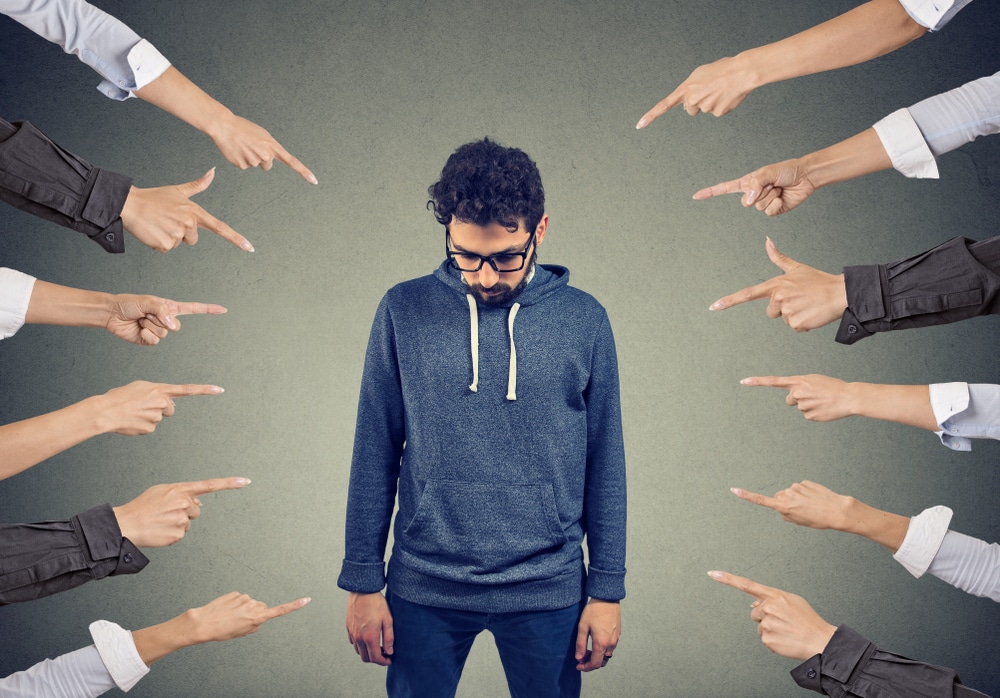
According to the 2021 survey by NSDUH, 40.7 million adults with substance use disorders did not get treatment at a specialty facility. Of this number, 39.5 million (96.8%) didn't feel like they needed treatment, and 837,000 (2.1%) believed they needed care but didn't try to get treatment.
Some examples of stigma towards those with addiction include:
Stigma related to heavy drinking and illegal drug use can come from various sources, including primary care physicians, friends, family, employers, media, and society. The justice system also contributes to stigma because it incarcerates those with addiction instead of helping them seek treatment.
Various resources are available for people struggling with addiction, including support groups like Alcoholic's Anonymous (AA) and Narcotics Anonymous (NA), which offer a community of peers who understand the challenges of addiction. You can also join inpatient or outpatient programs for a safe and supportive environment that allows you to focus on your recovery. Treatment centers provide a range of treatment options that include:

Remember that recovery is a journey, and it is important to be patient and kind to yourself along the way. You can overcome addiction and lead a healthy and fulfilling life with the right support and resources. Don't suffer in silence; reach out for help today.
Harm reduction is a public health approach that aims to reduce the harms associated with drug or alcohol use, even if the individual is not yet ready to quit. Harm reduction strategies can include safe injection sites, needle exchange programs, and overdose prevention initiatives. Harm reduction efforts can help individuals manage the risks associated with drug or alcohol use and provide a supportive and non-judgmental approach to addiction.
If you are struggling with addiction, knowing that you are not alone is important. Addiction is a common issue that affects millions of people around the world. While it may feel like you are the only one dealing with this problem, many others are also struggling and seeking help. By reaching out for help, you can connect with others who understand what you are going through and provide you with support and encouragement.
Drug overdose is a significant public health issue that affects all age groups. However, it is particularly concerning among seniors, who are dying at an alarming rate due to drug overdoses. In recent years, there has been a significant increase in the number of seniors who have died from drug overdoses, and this trend shows no signs of slowing down. According to the Centers for Disease Control and Prevention:
This data reveals a frightening trend in drug overdose deaths among older adults. In a single decade, alcohol and drug use among the elderly has skyrocketed, and as a result, more and more seniors are dying of an overdose. It begs the question, is it that more people from the 60's & 70's counterculture movements (hippies, beatniks, etc.) are now approaching their golden years? Or, is it simply that illicit and prescription drugs are more dangerous nowadays?
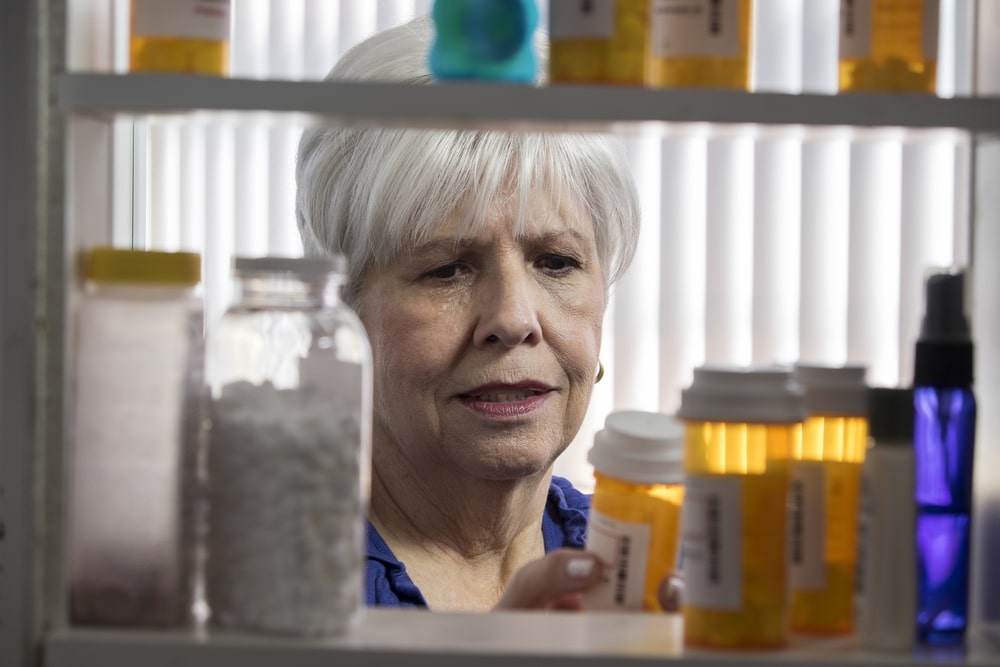
Many factors contribute to the high overdose rates among the baby boomer population. Along with regular health care procedures and recreational drug use, more and more seniors are becoming a significant part of the drug overdose epidemic in the United States.
Prescription medications, particularly opioid painkillers, significantly contribute to drug overdose among seniors. According to the CDC, seniors are more likely to be prescribed opioids and other medicines for pain relief that can be misused or overdosed on. They are also more likely to experience adverse side effects from these medications, such as respiratory depression, which can be life-threatening.
There are several reasons why seniors may be at increased risk of overdose from prescription medications. One reason is that they are more likely to have chronic pain, terminal illness, dementia, etc., that require multiple medications, increasing the risk of drug interactions and overdose. Additionally, age-related changes in the body, such as decreased kidney or liver function, can affect how medications are metabolized, increasing the risk of overdose.
Prescription drug abuse is also an issue among seniors. Many people mistakenly believe prescription medications are safer than illicit drugs, so they may be more willing to abuse them.
Another major factor underlying drug overdose deaths in seniors is a history of substance abuse. Many individuals reaching their golden years were part of the "hippie" or "free love" counterculture movement in the 1960s and 1970s. During this era, the use of psychedelic drugs such as LSD was popular, as was the use of marijuana.
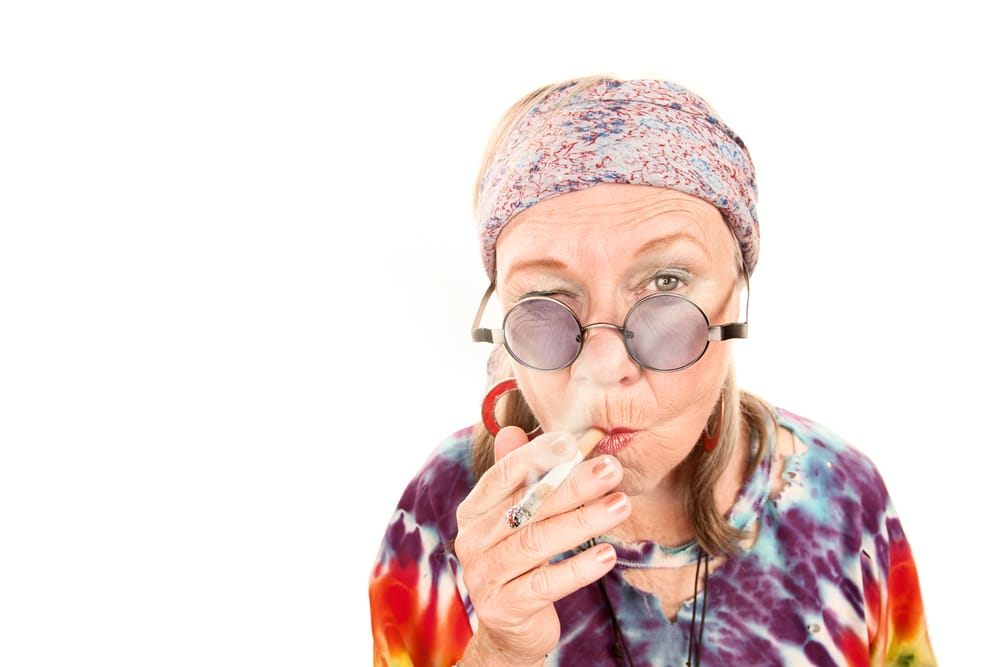
Unfortunately, many of these individuals have carried their substance abuse habits into old age. They are now more vulnerable to overdosing on substances due to decreased tolerance and physiological changes that come with aging.
Today's drugs are more powerful and, therefore, more dangerous than in the past. For example, the synthetic opioid fentanyl is 50 to 100 times more potent than morphine and can cause death in even small doses. Fentanyl has been linked to a dramatic increase in overdose deaths over the past few years and is particularly deadly for seniors due to their decreased tolerance.
Alcohol use has also increased among seniors, and heavy drinking is becoming more common in this age group. Binge drinking is a particular concern, as it can increase the risk of alcohol poisoning and other health problems. But in many cases, alcohol is pushed to the side in discussions about substance use and addiction.
Older adults are drinking alcohol, and this is driving deaths from overdose, accidents, and liver disease. Besides, mixing alcohol and other drugs, especially depressants, significantly increases overdose risk.
The National Institutes of Health points out that some seniors may turn to drugs or alcohol to cope with significant life changes. Retirement, the death of a spouse, or illness can all be difficult for seniors to handle and can increase their risk of substance abuse. The COVID-19 pandemic has also had a significant impact on seniors, who are more likely to experience isolation and loneliness due to social distancing measures. These feelings can lead some seniors to abuse drugs or alcohol as a way of coping with their situation.
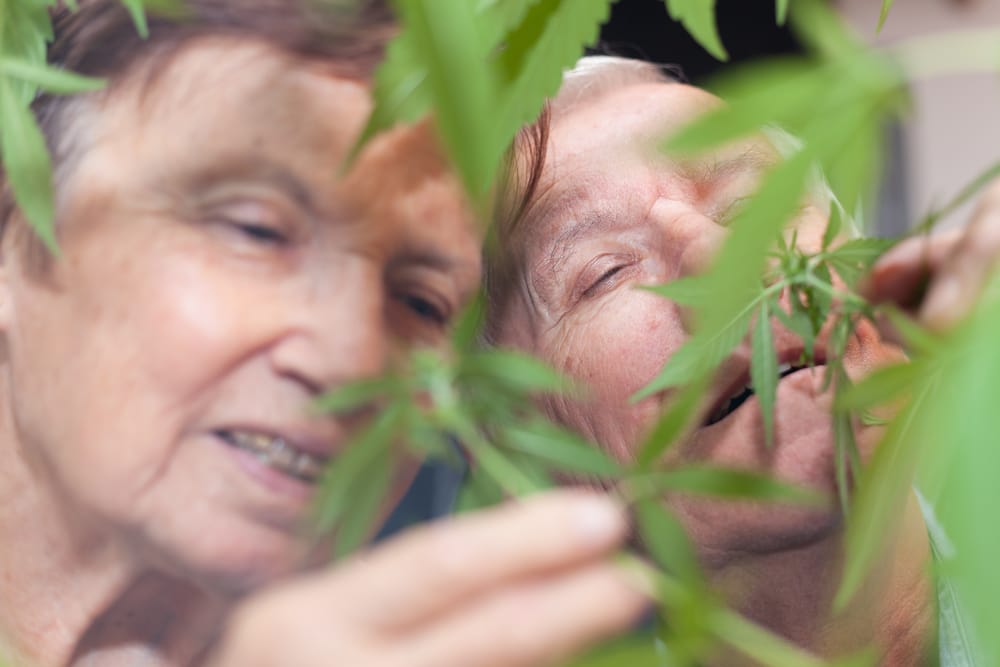
Mental health issues, such as depression, anxiety, or trauma, are a major risk factor for substance abuse and overdose in seniors. According to the World Health Organization, older adults are more likely to have mental health problems than their younger counterparts due to ongoing loss in capacities, the decline in functional ability, life-changing events, a drop in socioeconomic status with retirement, etc. These stressors can result in isolation, loneliness, or psychological distress in older people, leading to increased substance use and overdose.
Given the unique challenges that seniors face, it is important for caregivers, loved ones, and even healthcare providers to be aware of the warning signs of substance abuse and addiction and the available treatment options. Substance abuse is a serious issue that can lead to life-threatening consequences, and seniors need to get the help they need.
But in many cases, older adults have difficulty accessing treatment due to transportation, financial issues, and stigma. As such, they may need extra support and encouragement from family, friends, and the community.
If a senior is struggling with substance abuse, they must get professional help as soon as possible to lessen the risk of overdose and other health problems. By recognizing the unique challenges seniors face and addressing substance abuse issues early on, we can help to reduce the number of overdose deaths in this age group.
As part of an ongoing war on drugs, in November 2020, Oregon became the first state in the US to decriminalize the possession of small amounts of hard drugs. The measure, known as Measure 110, was widely praised by drug policy reform advocates as a progressive step that would help to reduce the stigma around drug use and provide people with drug addiction problems with much-needed treatment.
Measure 110 made personal possession of methamphetamine, heroin, LSD, oxycodone, and other drugs punishable by a $100 fine rather than jail time. This was in a bid to reduce incarceration rates and redirect funds toward addiction treatment programs. These treatment programs would be funded through marijuana tax revenue and savings from decreased law enforcement costs.
The Oregon Health Authority, one of many behavioral health resource networks, announced on September 22 that it had completed awarding the first two years of funding to nonprofits under Oregon's decriminalization of drugs law.
According to OHA, the first round of grants totaled $302 million. Despite this milestone, experts warned that more than just services would be needed to curb the high rates of drug use and resulting societal costs in the state. Keith Humphreys told the Oregon lawmakers that the state should adjust its permissive approach as it encourages drug use without any deterrent.
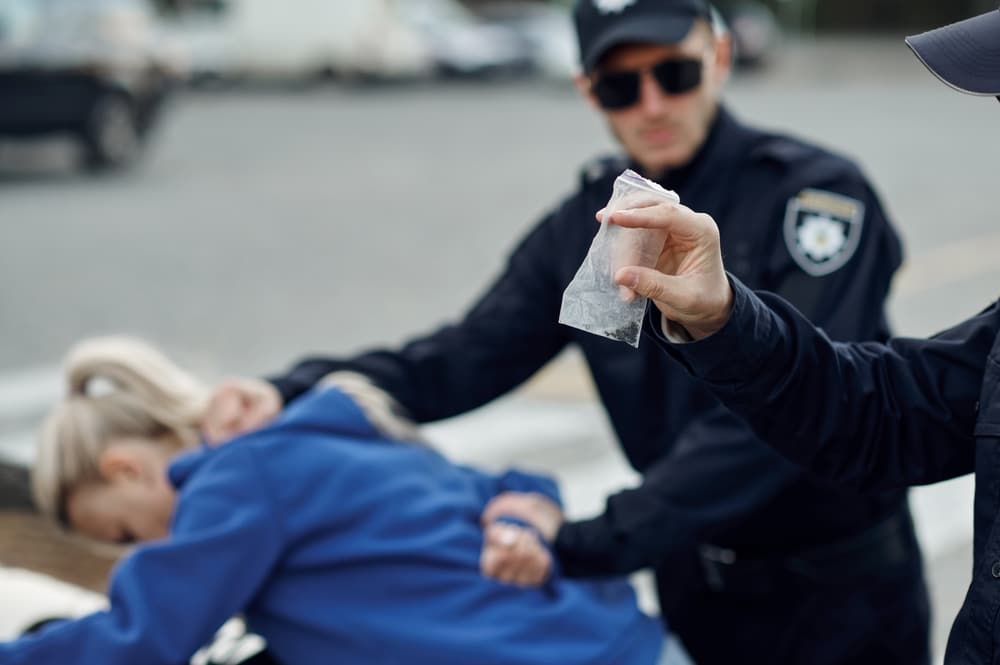
"Because the West Coast has an individualistic culture with a tolerance for substance abuse, social pressures to seek treatment are often minimal," said Keith Humphreys, the Founder, and co-director at the Stanford Network on Addiction Policy.
"So, on the one hand, we have widely available and highly rewarding drugs. On the other hand, little or no pressure to stop using them. Under those conditions, we should expect to see exactly what Oregon is experiencing: extensive drug use, extensive addiction, and not much treatment seeking." (Source)
According to Humphreys, people struggling with addiction hardly seek treatment without pressure from loved ones, health care providers, or the law. He says this should be a concern because the state has lifted the legal pressure to stop substance abuse and seek treatment. Besides, since many people who struggle with use don't work or keep in touch with loved ones, the pressure to quit might not come from those sources, either. (Source)
M110 allows the law authorities to write $100 tickets for personal possession of small amounts of drugs, and the charged person can just call the Life helpline line and have their ticket removed. It all seems very easy to get away with abusing drugs.
But despite that, many people who are issued these tickets still ignore them, according to Dr. Todd Korthuis, the head of addiction medicine at Oregon Health & Science University. By the end of this summer, 3000 tickets were issued, and only 137 calls were made. Even more disturbing is that most callers were not seeking treatment but only screening for legal reasons. (Source)
The Oregon voters voted in favor of Measure 110, which decriminalized the possession of small amounts of drugs and redirected 110 funds from law enforcement to addiction treatment. The measure was designed to address the state's public health crisis, exacerbated by the COVID-19 pandemic.

According to proponents of the measure, it would help to reduce the number of those incarcerated for drug-related offenses and redirect funds to much-needed addiction treatment programs. In addition, by decriminalizing drug possession, the measure will help to reduce the stigma associated with addiction and make it more likely that people will seek treatment.
When the voters passed the ballot measure, they recognized drug addiction and overdoses are a serious problem in Oregon; and that the state needed to increase access to drug treatment. The health-based approach to drug use problems is not only more humane but also effective and cheaper than criminal punishments. Making people criminals because they abuse drugs or struggle with addiction is costly and life-ruining, making it hard to seek treatment.
On February 1, 2021, the laws regulating controlled substances' possession changed from felonies to Class E violations. Measure 110 is designed to ensure that anyone who wants access, assessment, treatment, and recovery services for substance use gets it.
By all accounts, Measure 110 was set to reduce the pressure on drug users seeking treatment or help. However, going by statistics, it seems to be failing because Oregon has a nearly 20% surge in overdose deaths in the year that ended in April 2022. And according to Dr. Tod Korthuis, Oregon has one of the highest rates of substance use disorders and mental health disorders. Conversely, it ranks the least for access to treatments in the nation.
Humphreys and Korthuis don't fault Measure 110 for the spiking overdose deaths and other drug-related issues. However, they believe these trends have outpaced the state's addiction treatment system.
Measure 110 is the first of its kind in the United States. The only other country that has tried it successfully is Portugal, which is often cited as an inspiration. Initially, the country had harsh policies led by the criminal justice system. It needed to try something else. So, in 2001, Portugal took a radical step and became the first country globally to decriminalize the consumption of all drugs.
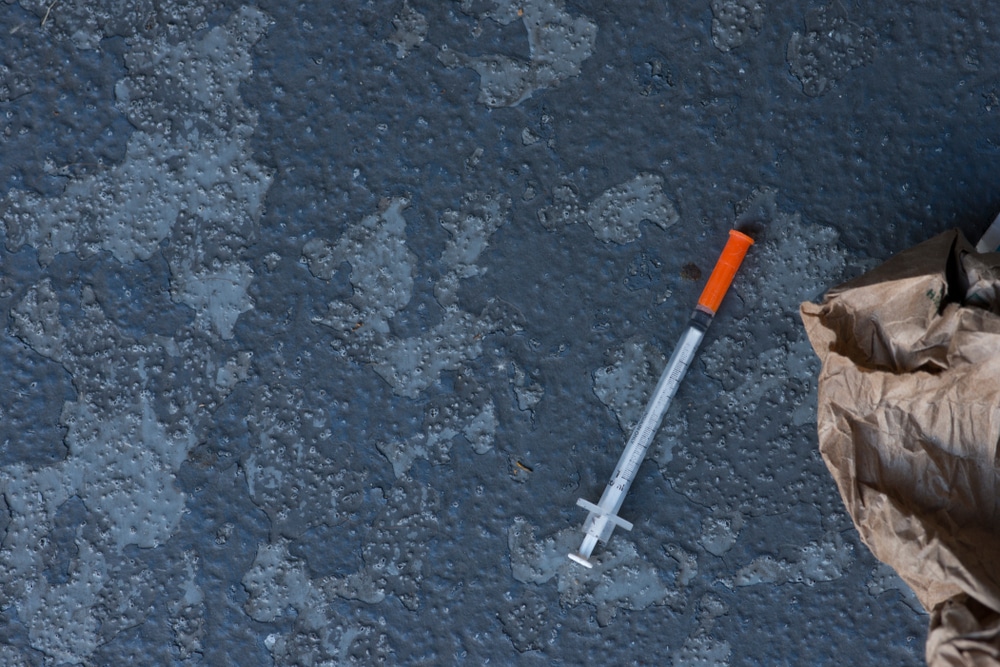
Speaking about what needs to be done, Humphreys mentioned that Portugal puts heavy legal and social pressure on those abusing drugs to get help. And despite the decriminalization of drugs, one can hardly see people openly using or dealing drugs, as in West Coast cities of the US. That's because they close operations and use court pressure to lead them into treatment.
"I have spent a lot of time in Portugal, and I know the people who designed their policy," Humphreys said. "Please take it from me; Oregon is not following Portugal's example and will not get its results." (Source)
Humphreys further mentioned the need for harm reduction, which emphasizes engaging directly with addicts to prevent overdose, and transmission of infectious disease, improve physical, social, and mental well-being and offer low-threshold options for accessing addiction treatment and other health care. He recommended solutions like making Naloxone (opioid antagonist) more available to reduce overdose deaths.
Poverty is one of the most significant predictors of drug abuse and addiction. Individuals who live in poverty are more likely to turn to drugs to cope with the stress and challenges of their lives. At the same time, drug abuse can lead to further poverty, chronic illness, and mental health problems.
A 2019 study found that most opioid overdose cases across 17 states were concentrated in zip codes with lower education and median household income as well as higher rates of unemployment and poverty. Another UNODC study dubbed Socioeconomic Characteristics and Drug Use Disorders found that those who belong to disadvantaged groups had the highest relative level of risk of suffering from an addiction. This could be due to homelessness, social exclusion and inequality, and mental health problems that are also synonymous with poverty.
While poverty is not the only factor for substance abuse in the United States, it is certainly important. People living in poverty are more likely to be predisposed to risk factors linked to higher rates of substance abuse. They may also live in poverty-stricken areas often home to illegal drug activity, making drugs more accessible.
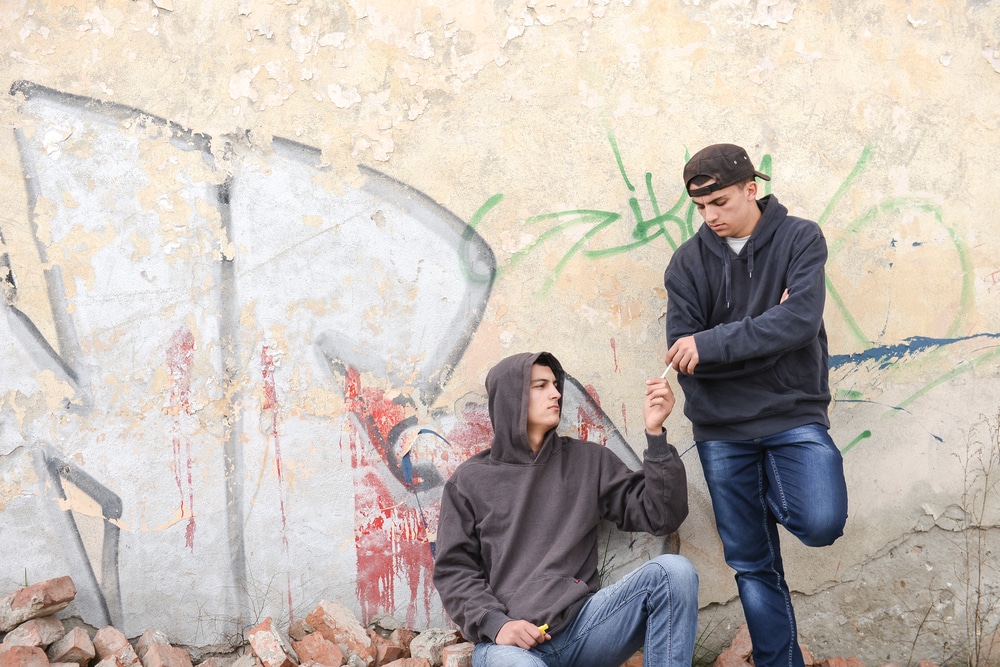
The link between poverty and drug abuse is complex and multi-layered. Poverty can both lead to drug abuse and be a consequence of it.
There are several ways that poverty increases the likelihood of drug abuse. For example, people who grow up in poverty may be more likely to associate with others who use drugs, making them more likely to develop a substance abuse problem. Biological factors are also at play, as people who live in poverty are more likely to experience chronic stress, which can alter brain chemistry and make someone more vulnerable to addiction. Financial issues can be a leading source of stress for many younger adults.

Here's a quick look at some of the ways poverty can contribute to drug abuse:
Poverty and drug abuse often go hand-in-hand. Drug use can also lead to poverty in different ways.
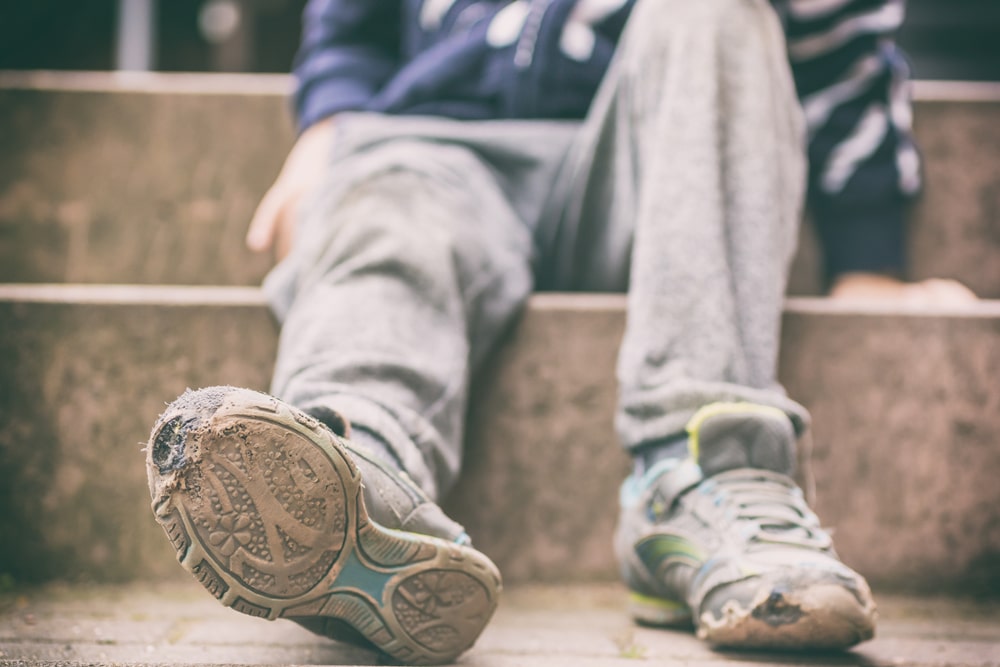
Individuals struggling with addiction often need help addressing the underlying causes of their drug abuse. This may include treatment for addiction and mental health problems. Treatment facilities should also address underlying issues causing the addiction. This includes things like providing:
Treating the root causes of addiction gives individuals a better chance of achieving long-term recovery. This, in turn, can help break the cycle of poverty and addiction. If you or someone you know is struggling with addiction, please reach out for help. There are many resources available to those who need them.